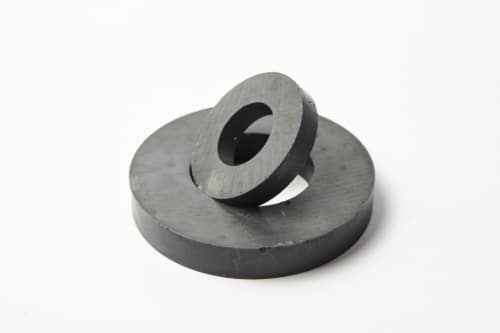The Best Magnetic Cores for Transformers

Are you looking for the best magnetic cores to use in your transformers? Look no further – there are plenty of options out there that can help you create a successful and efficient design. Transformer cores are an essential component of any transformer setup, and choosing a quality can go a long way toward ensuring that it functions optimally.
Learning the differences between magnetic core materials and how they work will help you find the best option for your project. Although looking for the best magnetic core for transformer designs can be daunting due to the many types available, you should get yourself familiarized to make a more informed and substantial final decision.
 What are Magnetic Cores?
What are Magnetic Cores?
Magnetic cores are ferrous metal pieces that are wrapped with wire coils. Its high permeability allows it to concentrate magnetic field lines within itself, especially if correctly assembled. These are used in many industrial applications, such as motors, electrical transformers, and induction devices.
How do Magnetic Cores Help Make Transformers Work?
Transformers are designed with primary, secondary, and tertiary windings. In between these windings, magnetic flux drives the transformer. When the windings are placed around a magnetic core the transfer of energy is more efficient. Electrical current in the primary windings is converted into magnetic flux within the magnetic core, and then transferred to the secondary windings and converted back into electrical current. The magnetic-electric transfer is efficient and allows for isolation of primary and secondary electrical circuits. Electrical current can be increased or decreased depending on the ratio of the primary and secondary windings.
The choice of core materials to use in a transformer is very important. The transformer designer must take power, maximum magnetic saturation, permeability, and loss into consideration when choosing a core. Cores with higher permeability may be more efficient in flux transfer, but they can have lower saturation points, causing a transformer to be larger in size. MK Magnetics partners with transformer manufacturers such as Stangenes Industries to design the best transformers with the best cores for their customers.
Choosing Nanocrystalline Cores for Transformers
Upon exploring the magnetic core selection for transformers and inductors, you will find that the most popular option is tape-wound cores, one of which is nanocrystalline. These are used in high-frequency and high-voltage applications where an intense, reliable magnetic flux is needed. The best examples are high-voltage pulse transformers and high-frequency transformers from Stangenes Industries, Inc.
Tape Wound Cores for High Frequency & High-Voltage Pulse Transformers
Tape wound cores are constructed by wrapping layers of thin metal tape on each other and winding them in a coil shape, much like a coil of tape, to form the core structure. The main advantage of this type of core is that it offers high permeability, which means that it allows for an efficient induction current.
They are also lightweight and have a low magnetic hysteresis loss, meaning they can be used in higher-frequency applications. It’s why Stangenes uses these cores for their pulse transformers.
Nanocrystalline cores
A nanocrystalline core is a type of tape-wound core made of metallic-glass materials with a crystalline structure. It has high-frequency characteristics, making it an ideal choice for power components. Apart from these novel applications, it’s also used in common mode chokes (CMC).
Other benefits of nanocrystalline cores:
- May tailor core shapes and magnetic properties
- Low magnetic core loss
- High saturation flux density
- Superior permeability
Different Types of Magnetic Core Materials
A magnetic core can be made out of various materials apart from nanocrystalline. These materials must improve or enhance the magnetic permeability of the core.
The most common ones are as follows:
- Amorphous materials: Cores made with amorphous materials offer higher resistivity with low magnetic loss. These materials are similar to metallic-glass alloys with randomly arranged noncrystalline structures.
- Silicon steel: This material has high electrical resistivity and also offers a high flux saturation.
- Nickel alloys: Cores with either 50% or 80% nickel alloys offer superior soft magnetic properties, allowing them to perform well in transformers.
- Cobalt alloys: Cores with cobalt-based alloys have the highest flux saturation.
There are many other highly specialized materials for various applications, but these are the most commonly used materials for magnetic cores in transformer applications.
Choose the Right Material for Your Magnetic Cores
When it comes to magnetic core transformer materials, choosing the right one will enhance the performance of your transformers. As a result, you’ll experience smoother and more seamless operations in your facility.
If you’re looking for a reliable magnetic core manufacturer for your transformers, look no further than MK Magnetics. With years of experience in magnetic cores, we’re experts who can guide you. Don’t hesitate to contact us today or request information; we’ll find a solution to ensure your project’s success.


 Print This Page
Print This Page